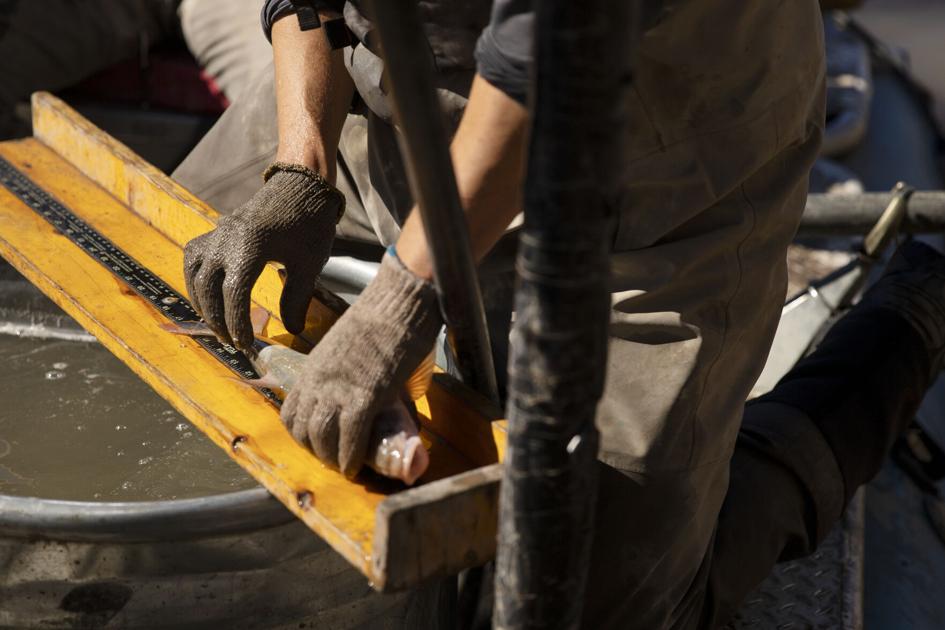
Local population-estimate work by Colorado Parks and Wildlife crews on the Colorado River is suggesting so far that debris flows from flooding on upstream burn scars this summer had only limited impacts on fish numbers.
The crews are doing the work to better assess the level of fish kill that occurred after massive flooding up Roan Creek and its tributaries outside De Beque in late July. The flooding resulted from heavy rains on areas scarred by last year’s Pine Gulch Fire. Debris flows also occurred in late July in the area of the 2020 Grizzly Creek Fire farther upstream in Glenwood Canyon, muddying the river and causing a long-term closure of Interstate 70 in the canyon.
Sediment and ash from flooding in burn areas can clog the gills of fish, making it hard for them to take in oxygen. And fish in the Colorado River already were stressed this summer due to low river levels and high water temperatures.
Authorities received reports of dead fish only in the dozens after the debris flows, with some showing up in local irrigation systems.
Although the reported number of dead fish wasn’t that high, poor visibility in the river during muddy conditions made it harder to assess the true extent of fish mortality, and factors such as scavenging animals also impair damage assessment work if it can’t start immediately after a die-off. But the new population-monitoring work by CPW, involving the use of electrofishing, is suggesting the fish kill was minimal and not enough to harm populations in the long-term.
Lori Martin, senior aquatic biologist for CPW in Northwest Colorado, said the agency is seeing good numbers of native fish and “feeling pretty confident that fish have been able to make it through those (debris flow) events this year.”
“We don’t have any indication right now that we’ve had any sort of mass kill events where we’re concerned at this point with population-level impacts,” she said.
The work that crews have been doing, as far upstream as Rifle earlier and in Grand Junction this week, involves raft-mounted electrofishing gear. Martin said the method stuns the fish, which can be netted, identified by species, measured and weighed. Crews use a mark-recapture population estimate technique that involves punching a hole in the tail or another fin, or for some fish placing a tag under the skin that can allow them to be tracked individually over the long term through the use of a scanner.
Crews then return to the same stretch of water, typically in two days, to capture more fish. The percentage of marked versus unmarked fish they catch on the second trip lets CPW staff make overall estimates of local species populations.
The summer fish kill included nonnative and native fish, including at least one razorback sucker, which is federally listed as an endangered species.
Martin said native fish — including razorback suckers, Colorado pikeminnow and bonytail chub, which all are endangered — were among the fish crews have identified during their surveying efforts.
“We’re encouraged by the results we’re seeing so far,” she said.
She said crews haven’t yet worked the river farther upstream than Rifle to better assess impacts specifically from the Grizzly Creek Fire.
"fish" - Google News
October 24, 2021 at 01:15PM
https://ift.tt/3jwl7JO
Fish kill from flooding looks to have been limited - The Grand Junction Daily Sentinel
"fish" - Google News
https://ift.tt/35JkYuc
https://ift.tt/3feFffJ
Bagikan Berita Ini














0 Response to "Fish kill from flooding looks to have been limited - The Grand Junction Daily Sentinel"
Post a Comment